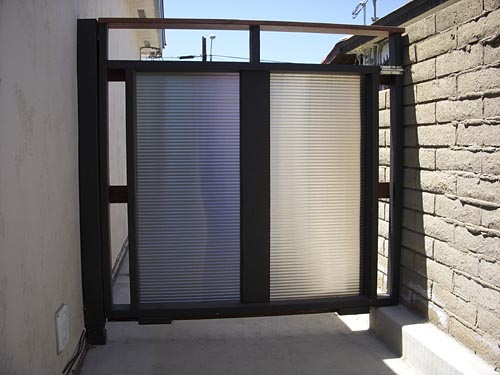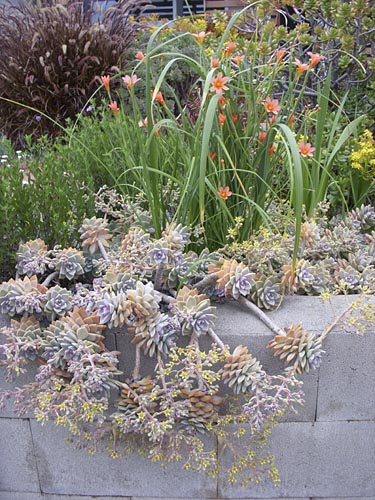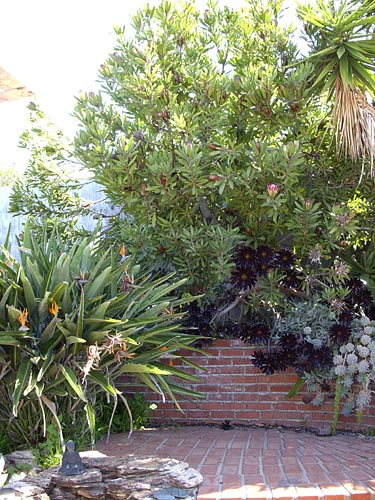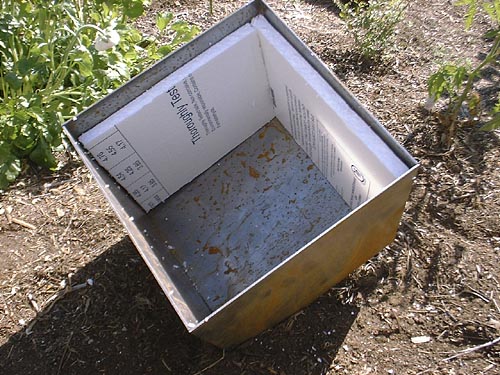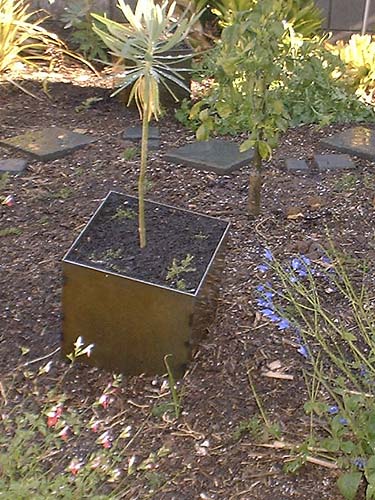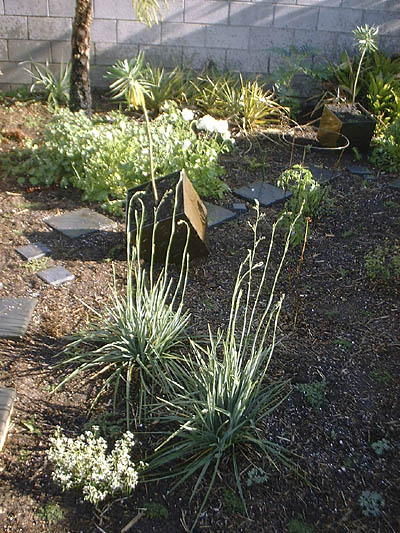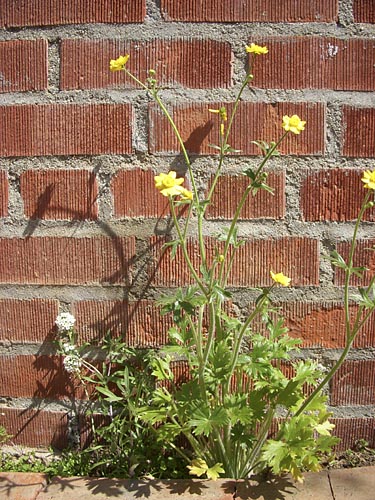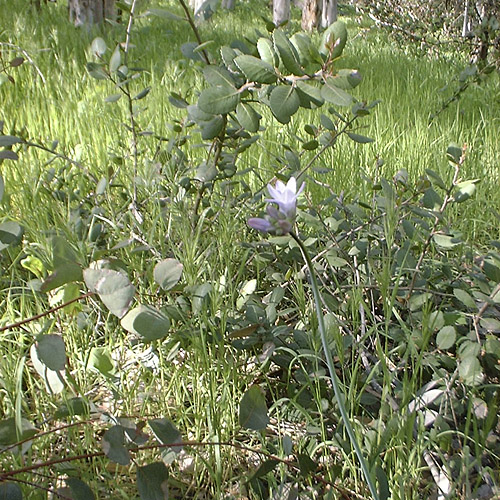Last summer John and I were at the farmer’s market in Ocean Beach, a funky, alternative neighborhood of San Diego. We were looking over some of the offerings at a stall when someone behind me starts laughing and shouts out over my shoulder, “Look at those ugly-ass tomatoes!”
Obviously someone used to the perfectly shaped (and perfectly tasteless) grocery store tomatoes, he was pointing out a pile of Cherokee Purple tomatoes to his girlfriend. “They’re, like mutant. Who’d buy that?” To be sure, the tomatoes were flat, irregularly shaped and sized, partly green and partly reddish-purple. Nothing to win a spot on a pinup calendar of tomato varieties. But these tomatoes have their rabid followers, and I count myself one of them. They’re like the best tomato you’ve tasted, and sliced up they’re actually pretty attractive.

The above is a picture from the Seed Savers Exchange catalog [ source ]. These are prettier examples than you usually find of this variety.
One person even has a domain name, cherokeepurple.com attached to his blog entries about trying to grow this variety (without much success) in Arkansas. I might not be that rabid, but last year I decided to save some seeds from the best examples of Cherokee Purple from the farmer’s markets so that I could grow my own. This is an heirloom, open pollinated variety, so they should come true from seed.
I consulted Saving Seeds, an older book by Marc Rogers that’s still available via Amazon (and probably a few other sellers). If you own the book, give it up–You’re a plant geek. There, the basic instructions were to first clean the seeds as best as you could. Next you drop them into a jar full of water for a few days until the gummy pulp surrounding the seeds ferments and liberates the seeds. When that happens, the previously pulpy seeds–which floated–would sink to the bottom of the jar. Finally you drain and dry them and store them away. I followed the instructions, but I was worried that there was still some pulp attached to some of the seeds when I was done with the process so that not all of them sank.
The acid test came three weeks ago when I put some of the seeds into pots. Maybe not all the seeds were processed perfectly, but I’m now the proud parent of six pots of Cherokee Purple seedlings!

I have a few spots around the yard selected for them, places where I’ve never put tomatoes, so I’m hoping they’ll take to their new locations and thrive. I’ll probably give them a couple more weeks in their pots, and then it’s time to set them loose. I’ll post the baby pictures as they grow up…pictures so ugly only a parent and lover of Cherokee Purple could love.


